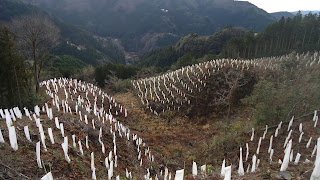關於FSC FM的標準,其10項原則與70項準則,是屬全球性通用的。因此國、公、私有林經營者,在申請FSC FM驗證的預審或年審時,可以考慮以下資料來源的整備與其他因素,以備驗證。
Criterion 6.4. The Organization shall protect
rare species and threatened species and their habitats in the Management unit
through conservation zones, protection areas, connectivity and/or (where
necessary) other direct measures for their survival and viability. These
measures shall be proportionate to the scale, intensity and risk of management
activities and to the conservation status and ecological requirements of the
rare and threatened species. The Organization shall take into account the
geographic range and ecological requirements of rare and threatened species
beyond the boundary of the Management unit, when determining the measures to be
taken inside the Management unit.
準則6.4. 為保護經營單元內珍稀物種、受威脅物種及其棲息地,組織應透過保育帶、保護區、連結通道,和/或(必要時)採取其他直接措施保護其生存與活力。措施應適切符合經營活動之規模、強度和風險,並合乎珍稀物種和受威脅物種之保育狀況和生態要求。當組織決定經營單元內之保護措施時,應一併考慮毗鄰經營單元之珍稀物種和受威脅物種地理分佈範圍和生態要求。
一、可能資料來源的整備:
1. 組織提供相關文件,例如:保留區、保護區、重要棲息環境設置的資訊、地圖、範圍; 物種調查報告,內容包括物種的種類、數量、分布、生態需求等資訊; 風險評估報告,內容包括經營活動對珍稀瀕危物種的潛在風險; 保護措施計畫,內容包括保護目標、實施方法、責任分工等資訊; 監測計畫,內容包括監測項目、方法、頻率、責任分工等資訊; 社區參與計畫,內容包括社區參與的方式、內容、責任分工等資訊
2.
組織訪談的人員類型:組織業辦人員、社區成員、政府官員、環境專家等。
二、其他因素:
組織應根據實際情況,選擇合適的保護措施實施相關保護措施:
1.
建立保留區、保護區、重要棲息環境
為保護自然資源或為保護特定物種或生態系統而劃定的區域,通常限制人類活動,但允許有限的人類活動,例如科研、教育等。
2.
維持物種連結性
建立連接不同棲息地的森林帶,可以讓物種自由移動交流的廊道。
3.
建立綠色步道是指穿梭於森林中的步道,可以讓人類在欣賞森林景觀的同時,也減少對野生動物的干擾。
4.
採取其他直接保護措施
人工繁殖是指在人工控制的環境下繁殖珍稀瀕危物種,以增加其族群數量; 棲息地復育是指恢復退化或破壞的棲息地,以改善物種的生存條件,例如:為鳥類或其他動物提供人工巢穴,以提高其繁殖成功率的巢箱設置。
5.
禁止或限制對珍稀瀕危物種的獵捕管制。
6. 採取措施減少道路對野生動物的衝撞,例如設置警示標誌、減速帶、地下通道等路殺防護措施。
Regarding the standards of FSC FM, its 10 principles and 70 criteria are
globally applicable. Therefore, when applying for FSC FM verification, whether
in pre-assessment or annual assessment, national, public, and private forest
managers may consider the following sources of information and other factors
for preparation:
Criterion 6.4. The Organization shall protect rare
species and threatened species and their habitats in the Management unit
through conservation zones, protection areas, connectivity and/or (where
necessary) other direct measures for their survival and viability. These
measures shall be proportionate to the scale, intensity and risk of management
activities and to the conservation status and ecological requirements of the
rare and threatened species. The Organization shall take into account the
geographic range and ecological requirements of rare and threatened species
beyond the boundary of the Management unit, when determining the measures to be
taken inside the Management unit.
Possible sources of information:
1. The organization
provides relevant documents, such as basic information, maps, and scopes of
conservation zones, protection areas, and significant habitat settings; species
survey reports, including species types, quantities, distributions, and
ecological requirements; risk assessment reports, including potential risks of
operational activities to rare and endangered species; conservation measures
plans, including information on protection goals, implementation methods,
responsibilities, etc.; monitoring plans, including information on monitoring
items, methods, frequencies, responsibilities, etc.; community participation
plans, including information on community participation methods, contents, responsibilities,
etc.
2. Types of
personnel for interviews: Organization staff, community members, government
officials, environmental experts, etc.
Other factors:
Organizations should choose appropriate protective measures based on
actual circumstances and implement relevant protective measures:
1. Establish
conservation zones, protection areas, and significant habitats. These are areas
designated for the protection of natural resources or specific species or
ecosystems, typically restricting human activities but allowing limited human
activities, such as research and education.
2. Maintain species
connectivity. Establish forest corridors connecting different habitats to allow
free movement and exchange of species.
3. Establish green
trails. These are trails through forests that allow humans to enjoy forest
landscapes while minimizing disturbance to wildlife.
4. Implement other
direct protective measures. Artificial breeding involves breeding rare and
endangered species under controlled environments to increase their population
numbers. Habitat restoration involves restoring degraded or damaged habitats to
improve species' living conditions, such as providing artificial nests for
birds or other animals to increase their breeding success rates through nest
box installations.
5. Regulate hunting
of rare and endangered species by prohibition or restriction.
6. Take measures to reduce wildlife collisions on roads, such as installing warning signs, speed bumps, and underpasses for wildlife roadkill protection.

沒有留言:
張貼留言